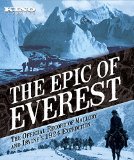| Reviews & Columns |
|
Reviews DVD TV on DVD Blu-ray 4K UHD International DVDs In Theaters Reviews by Studio Video Games Features Collector Series DVDs Easter Egg Database Interviews DVD Talk Radio Feature Articles Columns Anime Talk DVD Savant Horror DVDs The M.O.D. Squad Art House HD Talk Silent DVD
|
DVD Talk Forum |
|
|
| Resources |
|
DVD Price Search Customer Service #'s RCE Info Links |
|
Columns
|
|
|
Epic of Everest, The
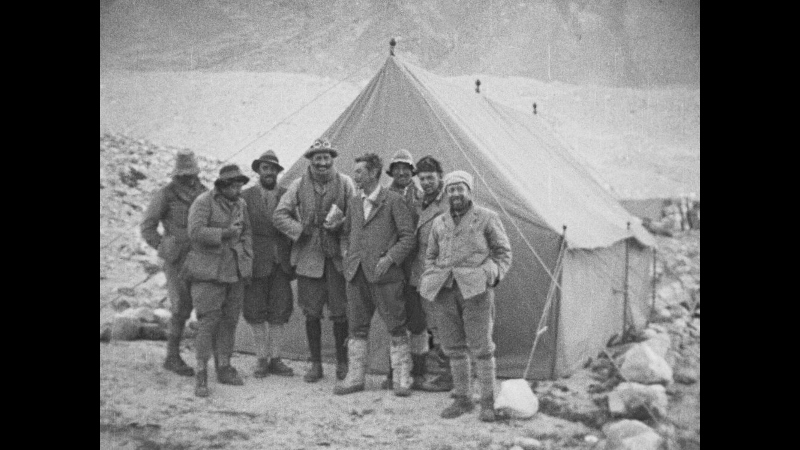 John Noel's uniquely atmospheric The Epic of Everest (1924) is a textbook example of cinematic lightning in a bottle: this 89-minute silent documentary (stay with me here) captures a 12-man team's second and final attempt to climb Mount Everest earlier that year. Led by British mountaineer Edward Felix Norton, the expedition was perhaps most famous for its final leg when remaining team members George Mallory and Andrew Irvine disappeared near the summit, placing a big question mark on whether or not their goal was actually reached. Mallory's body was found in 1999, but Irvine---and their filming equipment---remains lost somewhere, presumably on the snowy mountain's north face and possibly well preserved. Yet while the shadow of death unavoidably looms over The Epic of Everest, it's still a hopeful film that favors discovery and exploration over manufactured drama and crippling failure. The director's involvement with this film wasn't by chance: Captain John Noel had a strong enough interest in the mountain to journey through Tibet in 1913, later lecturing about his travels near Everest to Britain's Royal Geographical Society. This soon developed into Noel's 1922 documentary Climbing Mount Everest, which followed a second failed expedition by George Mallory and his team (the first was in 1921). After a positive reaction to his still photos and filmed footage of the imposing Everest, Noel provided much of the funding for the 1924 climb in exchange for complete photographic rights. With an arsenal of state-of-the-art equipment in tow---including a customized 35mm camera with a 20-inch telephoto lens, capable of filming action more than three miles away---the 12-man team began their fateful climb, after their journey through Tibet and the fascinating people captured on film along the way. Mount Everest's punishing atmosphere hit the team hard; though we don't see the worst of the weather, a handful of unavoidable conditions quickly reduce the team in number and spirit. Noel is not officially credited as a climber during the expedition; his journey up the mountain reaches North Col at nearly 21,000 feet, between Everest and neighboring China's Changtse mountain. It's from this vantage point that Noel is able to capture most of the action, including Mallory and Irvine's final moments on Everest's Northeast Ridge, which gives The Epic of Everest an unavoidably distant and haunting atmosphere that greatly enhances the mountain's imposing size and scope. As a whole, the film offers a solid narrative considering the difficulty of communication and teamwork, impossible to fully grasp in a world now accustomed to round-the-clock contact and instant gratification. Perhaps the greatest tribute to the men involved is that the first officially documented ascent of Everest wouldn't occur for another 29 years. Not surprisingly for a silent film, The Epic of Everest makes use of intertitles (text screens that pause the action to provide context) and lets music do some of the heavy lifting. Two known scores exist: the original 1924 version (recreated by Julie Brown and performed by the Cambridge University Chamber Orchestra) and a newly commissioned score by English actor/composer Simon Fisher Turner. Both are included on BFI's region-free combo pack released last year, while Kino's domestic Blu-ray edition only offers the newer one. A few other items are missing in action too...but the film's fantastic 2013 restoration (handled by BFI and Deluxe Digital) is still the main attraction.
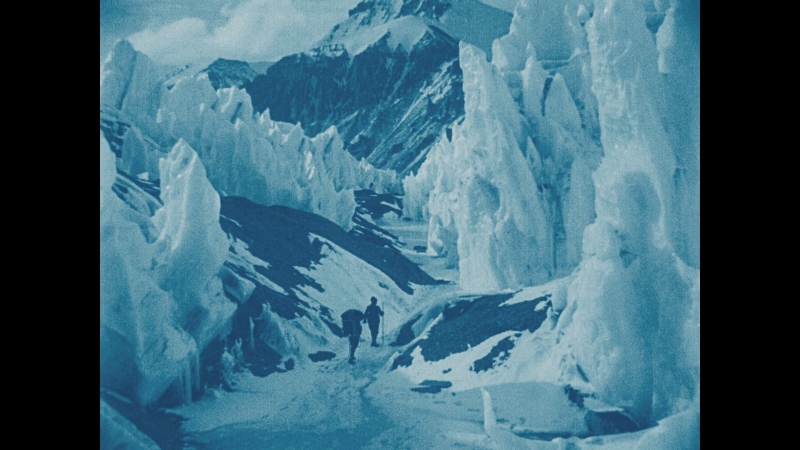
Presented in its original 1.33:1 aspect ratio, The Epic of Everest was granted a recent 4K restoration by the British Film Institute, which was also the basis of their well-regarded region-free combo pack released in 2014. For obvious reasons, an extensive level of effort was needed to bring the film up to snuff, and at least two different sources (including a film print owned by John Noel's only daughter, Sandra) were used to construct the finished product. Not surprisingly, the hard work paid off: there's a fantastic amount of image detail here, black levels are reasonably consistent, a few textures are evident, film grain is strong, and the original color tints have been reintroduced for the first time on home video. Of course, a handful of unavoidable problems are still on display, including missing frames and mild flickering. But considering The Epic of Everest is over 90 years old, it looks terrific and fans will be pleased.
Seeing as how the new score by Simon Fisher Turner was recently recorded, it's no surprise that the DTS-HD Master Audio track (available in 5.1 or 2.0) is a clean port that pairs well with the main feature. If you've got the proper setup, the 5.1 mix is obviously a more satisfying effort that's split quite evenly across the sound stage and does a fine job of placing viewers right in the middle of the action. In comparison, the 2.0 track is satisfactory and those who favor two-channel presentations will appreciate it. Unfortunately, the original 1924 soundtrack (recreated by Julie Brown and included on the region-free combo pack, linked above) is not present, which is one of this disc's only drawbacks. Obviously, no optional subtitles are needed...but they're not included during the extras, either.
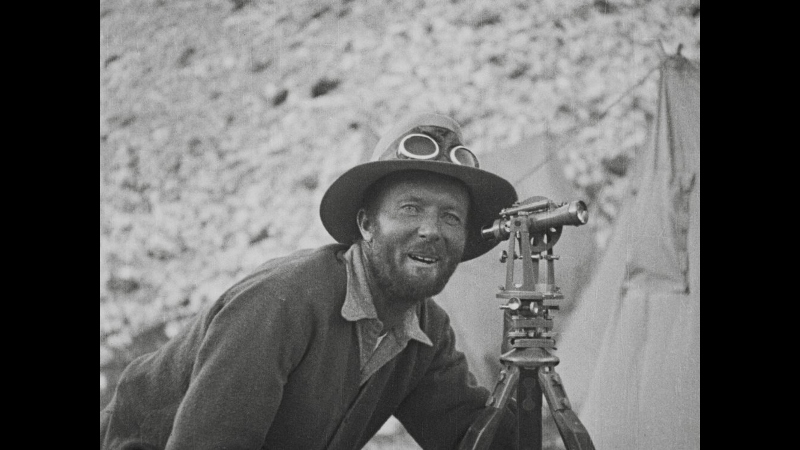
For a film approaching the century mark, Captain John Noel's The Epic of Everest is an accessible and entertaining slice of film history that, even with today's much more portable film equipment, would still prove to be an extremely tough undertaking. The mixture of historic documentation, visual wonder, and human drama (punctuated by our journey's mysterious final leg) frames this 89-minute production perfectly, whether you've seen it decades ago or haven't had the privilege yet. Kino's domestic Blu-ray package is basically a stripped-down port of BFI's region-free combo pack released last year; the A/V presentation is terrific, but the original 1924 score and a few extras are missing in action. A straight port would've earned this Blu-ray a stronger recommendation (and I'd still lean towards the reasonably-priced combo pack), but this is still a solid disc that casual fans should enjoy. Mildly Recommended.
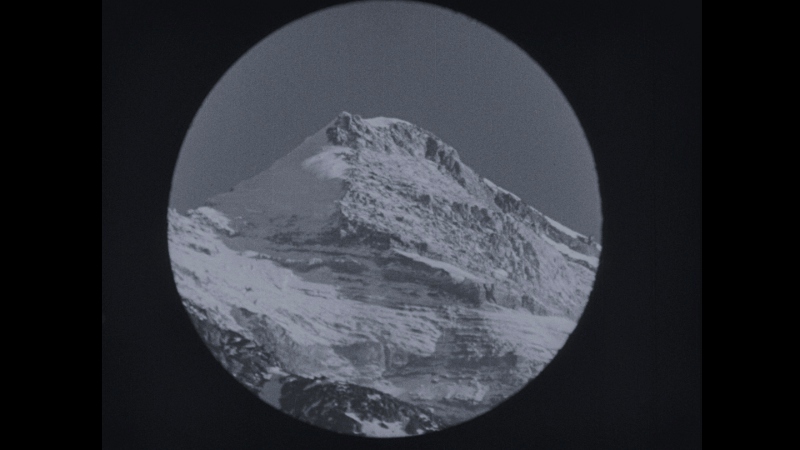 |
|
| Popular Reviews |
| Sponsored Links |
|
|
| Sponsored Links |
|
|
| Release List | Reviews | Shop | Newsletter | Forum | DVD Giveaways | Blu-Ray | Advertise |
|
Copyright 2024 DVDTalk.com All Rights Reserved. Legal Info, Privacy Policy, Terms of Use,
Manage Preferences,
Your Privacy Choices | |||||||









